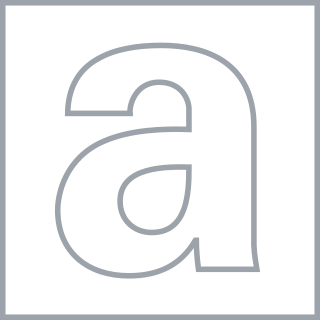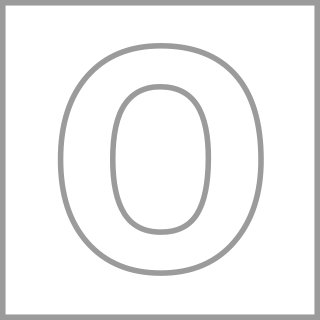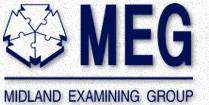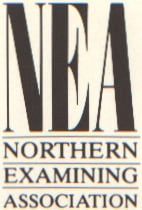CSE
The 1960 Beloe Report was commissioned to look into a new exam which became the CSE.
The CSE was introduced to provide a set of qualifications available to a broader range of schoolchildren and distinct from the GCE (O-Levels), that were aimed at the academically more able pupils, mostly those at grammar and independent schools (rather than secondary modern schools). [4] CSEs were available in both academic and vocational subjects, incorporated controlled assessment in addition to examination, and examination questions were typically offered in a shorter and more structured form than those found on an equivalent O-Level paper.
Before the introduction of the CSE, the majority of schoolchildren at secondary modern schools did not take externally set end of school examinations, and so left school without any nationally recognised qualifications. [4] Though the introduction of the CSE did not, of itself, resolve the issue as the majority still left at the end of the fourth year without sitting an external qualification. By the late 1960s and early 1970s, some counties had introduced their own examinable qualifications for those leaving at the end of the fourth year. For example, the county of Monmouthshire in Wales awarded the Monmouthshire Certificate in Education.
The majority of secondary modern pupils continued to leave without qualifications until the raising of the school leaving age to 16, in 1973, made a fifth year of secondary education compulsory.
A number of GCE and CSE exam boards experimented with offering a combined O-Level and CSE examination, in the 1970s, for borderline candidates. The papers contained questions limited to areas of the syllabus that were common to both an O-Level and CSE.
The range of courses for CSE was wider than that for the O-level and included many vocational subjects, such as car maintenance, which were not available at O-level. As comprehensive schools gradually replaced secondary modern schools, pupils could increasingly take a mixture of CSEs and O-levels until finally the examinations were merged with the new GCSE certification courses.
CSEs and O-levels are the predecessor examinations of the General Certificate of Secondary Education (GCSE). [4]
The General Certificate of Secondary Education (GCSE) is an academic qualification in a range of subjects taken in England, Wales, and Northern Ireland, having been introduced in September 1986 and its first exams taken in 1988. Public schools in Scotland use the Scottish Qualifications Certificate instead. However, private schools in Scotland often choose to follow the English GCSE system.
In the education systems of Barbados, England, Jamaica, Northern Ireland, Trinidad and Tobago, Wales, and some other Commonwealth countries, sixth form represents the final two years of secondary education, ages 16 to 18. Pupils typically prepare for A-level or equivalent examinations like the International Baccalaureate or Cambridge Pre-U. In England, Northern Ireland, and Wales, the term Key Stage 5 has the same meaning. It only refers to academic education and not to vocational education.
The General Certificate of Education (GCE) is a subject-specific family of academic qualifications used in awarding bodies in England, Wales, Northern Ireland, Crown dependencies and a few Commonwealth countries. For some time, the Scottish education system has been different from those in the other countries of the United Kingdom.

AQA Education, trading as AQA, is an awarding body in England, Wales and Northern Ireland. It compiles specifications and holds examinations in various subjects at GCSE, AS and A Level and offers vocational qualifications. AQA is a registered charity and independent of the government. However, its qualifications and exam syllabi are regulated by the Government of the United Kingdom, which is the regulator for the public examinations system in England and Wales.
An examination board is an organization that sets examinations, is responsible for marking them, and distributes the results. Some are run by governmental entities; some are run as not-for-profit organizations.

The International General Certificate of Secondary Education (IGCSE) is an English language based secondary qualification similar to the GCSE and is recognised in the United Kingdom as being equivalent to the GCSE for the purposes of recognising prior attainment. It was developed by Cambridge Assessment International Education. The examination boards Edexcel, Learning Resource Network (LRN), and Oxford AQA also offer their own versions of International GCSEs. Students normally begin studying the syllabus at the beginning of Year 10 and take the test at the end of Year 11. However, in some international schools, students can begin studying the syllabus at the beginning of Year 9 and take the test at the end of Year 10.
This is an article about the grading used below degree level in most of the United Kingdom. The entire United Kingdom does not use the same grading scheme. For a degree level, see British undergraduate degree classification.

The A-level is a subject-based qualification conferred as part of the General Certificate of Education, as well as a school leaving qualification offered by the educational bodies in the United Kingdom and the educational authorities of British Crown dependencies to students completing secondary or pre-university education. They were introduced in England and Wales in 1951 to replace the Higher School Certificate. The A-level permits students to have potential access to a chosen university they applied to with UCAS points. They could be accepted into it should they meet the requirements of the university.

The Associated Examining Board (AEB) was an examination board serving England, Wales and Northern Ireland from 1953 until 2000 when it merged with NEAB to form AQA.

The O-Level is a subject-based qualification conferred as part of the General Certificate of Education. It began in the United Kingdom and has been adopted, often with modifications, in several other countries.

The Midland Examining Group (MEG) was an examination board, operating in England, Wales and Northern Ireland. It offered a range of GCSE and Certificate of Achievement qualifications. It became part of OCR in 1998.
Examination boards in the United Kingdom are the examination boards responsible for setting and awarding secondary education level qualifications, such as GCSEs, Standard Grades, A Levels, Highers and vocational qualifications, to students in the United Kingdom.
The A-level is a main school leaving qualification of the General Certificate of Education in England, Wales, Northern Ireland, the Channel Islands and the Isle of Man. It is available as an alternative qualification in other countries, where it is similarly known as an A-Level.
The Joint Matriculation Board of the Universities of Manchester, Liverpool, Leeds, Sheffield and Birmingham (JMB), sometimes referred to as the Northern Universities Joint Matriculation Board, was an examination board, operating in England, Wales and Northern Ireland between 1903 and 1992. It became part of NEAB, which itself is now part of AQA.

The General Certificate of Education (GCE) Ordinary Level, also called the O-level or O level, was a subject-based academic qualification. Introduced in 1951 as a replacement for the 16+ School Certificate (SC), the O-level would act as a pathway to the new, more in-depth and academically rigorous A-level, in England, Wales and Northern Ireland. Later, the complementary and more vocational Certificate of Secondary Education (CSE) was added to broaden the subjects available and offer qualifications in non-academic subjects.
The Beloe Report, commissioned in the late 1950s in the United Kingdom, led directly to the implementation of the Certificate of Secondary Education, the CSE examination which would exist from 1965 to 1987. The CSE was withdrawn at the same time as the GCE Ordinary Level exam.

The Southern Examining Group (SEG) was an examination board offering GCSEs in England, Wales and Northern Ireland formally established in 1987. In 1994, it was taken over by the Associated Examining Board, but kept its own identity until the AEB merged with NEAB to form AQA in 2000.

The Northern Examining Association (NEA) was an examination board offering

Kathleen Tattersall was a British educationalist, specialising in examination administration. She was the leader of five examination boards in the United Kingdom before becoming the first head of exams regulator Ofqual.








